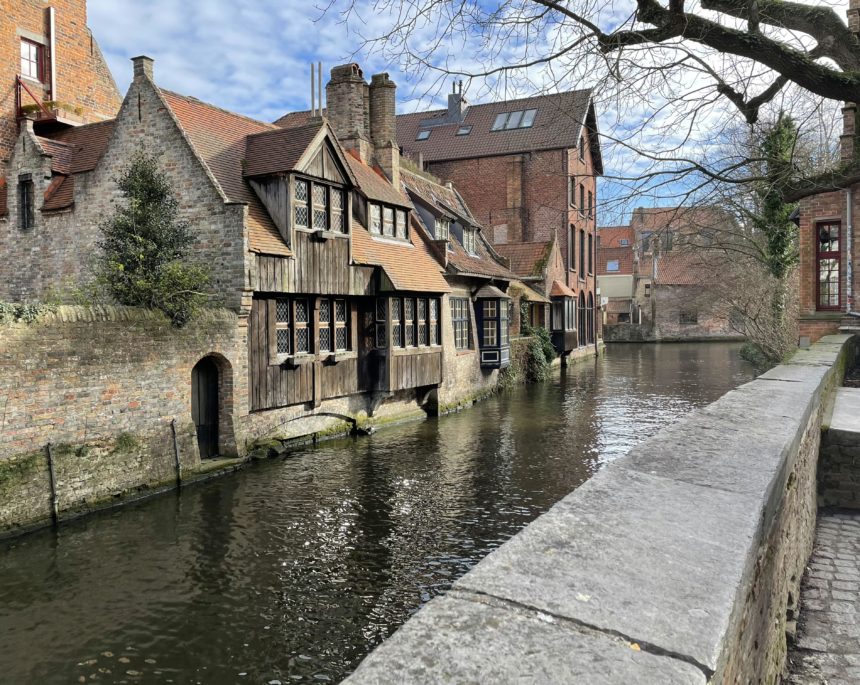Bruges is a small city in Flanders, the Dutch part of Belgium that counts with less than half a million inhabitants in all its extension. Put it in that way there shouldn’t be a reason for Bruges’ fame as a touristic attraction. Is there something else to expect from this town’s picturesque views and the possibility to enjoy some Belgian delicacies such as beer, waffles or chocolate?
Well, there is indeed more to this city than you can think at first. To start, Bruges was one of the first touristic cities already in the 19th century; it is the hometown of numerous artists, and right now it counts with three inscriptions on the UNESCO World Heritage List.
Do you want to know why this Belgian city is so special? Then let me show you what I discovered on my last visit.
Origins
Bruges was founded by the Romans around the 1st century BC as a way to protect the inland from pirate attacks by the sea. This connection between the city of Bruges and the sea turns out to be important in its history.
Golden Ages
Between the 12th and 15th centuries, this advantageous location made Bruges one of the main cities of Europe. The harbour was one of the most important ones in the commerce routes which made Bruges grow to be almost as big as London (the London of those centuries, not the current one).
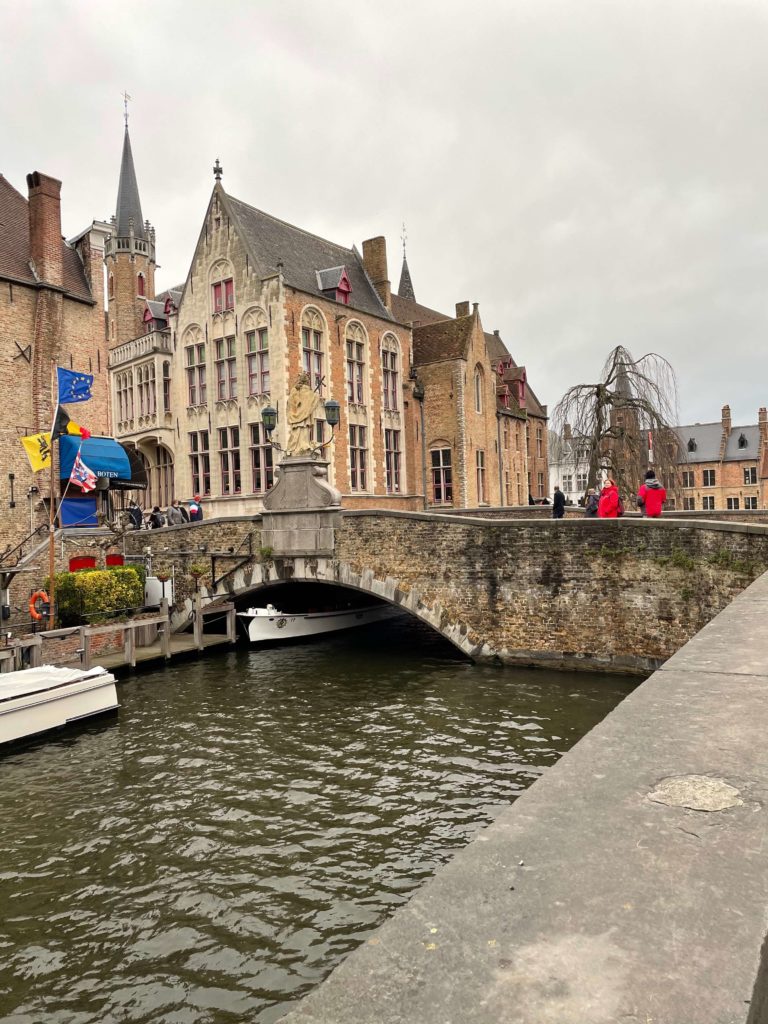
The cloth trade was one of the primary income sources and it created the industry of lacemaking in Bruges, still famous.
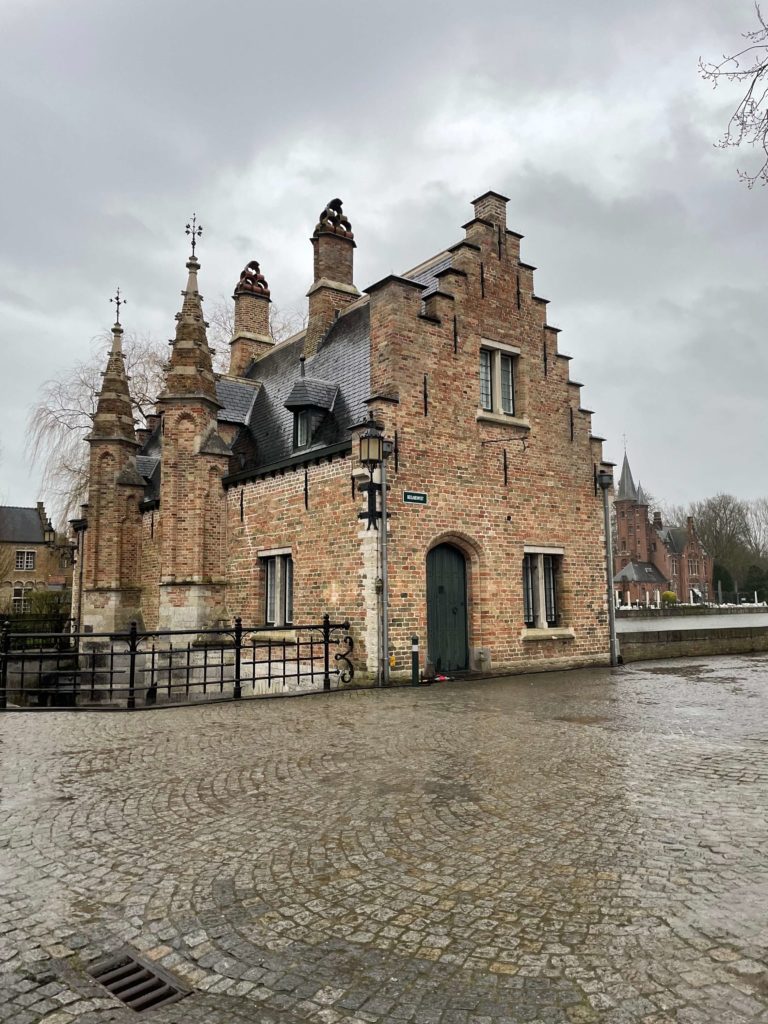
Painters
This Golden Age was accompanied by the court. The house of Burgundy, owners of the city, located their court in it and, as with any other court, this promote2d the arts immensely.
Bruges counted with a fine art school that taught many masters, these when the moment arrived, gifted some of their work to their school, which, as you can imagine, makes for a great art collection. Part of this collection can now be seen in the Groeningemuseum, where you can learn about the town’s history through the eyes of its artists.
One of these great masters from Bruges was Jan van Eyck who was part of the artistic movement known as Primitive Dutch masters, lot of his work can be seen in the several museums of the city.
Gruut Family
Not only artists accompany the court. As commerce prospered, so did the city, and the merchants. The great families that took part in the commerce saw their treasure grow, and, as was common in all of Europe, they show it with their houses. One of these families and probably the most important for Bruges was the Gruut family, who build up the Gruut house, now a museum about the family and the history of Bruges (Gruuthusemuseum).
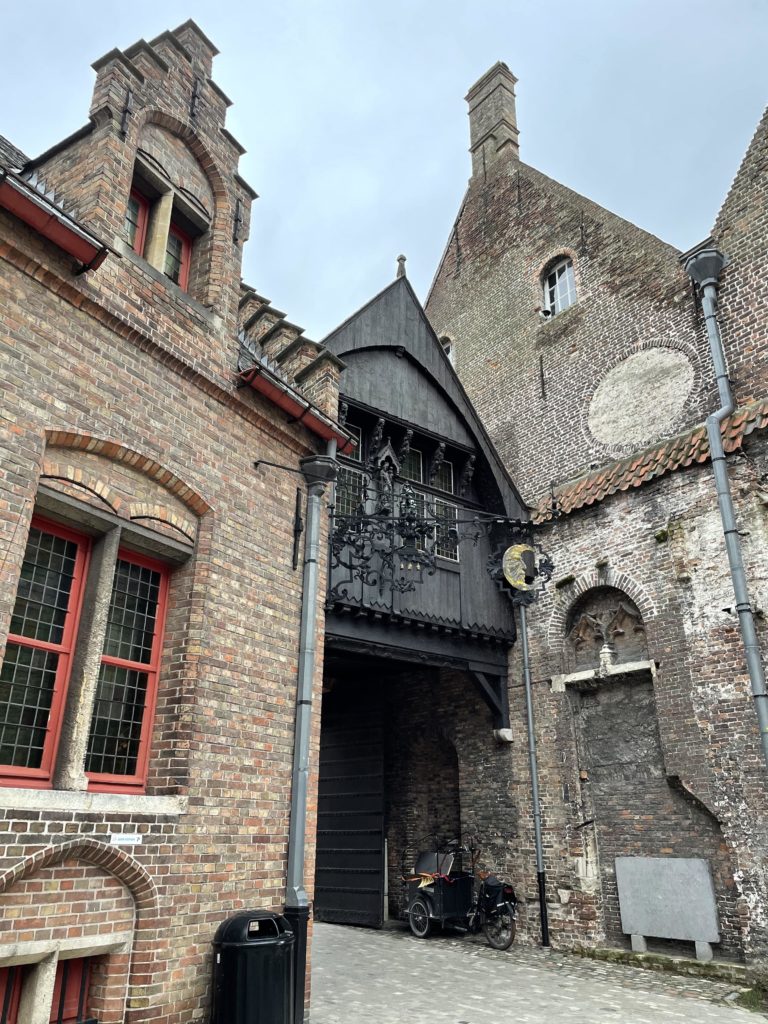
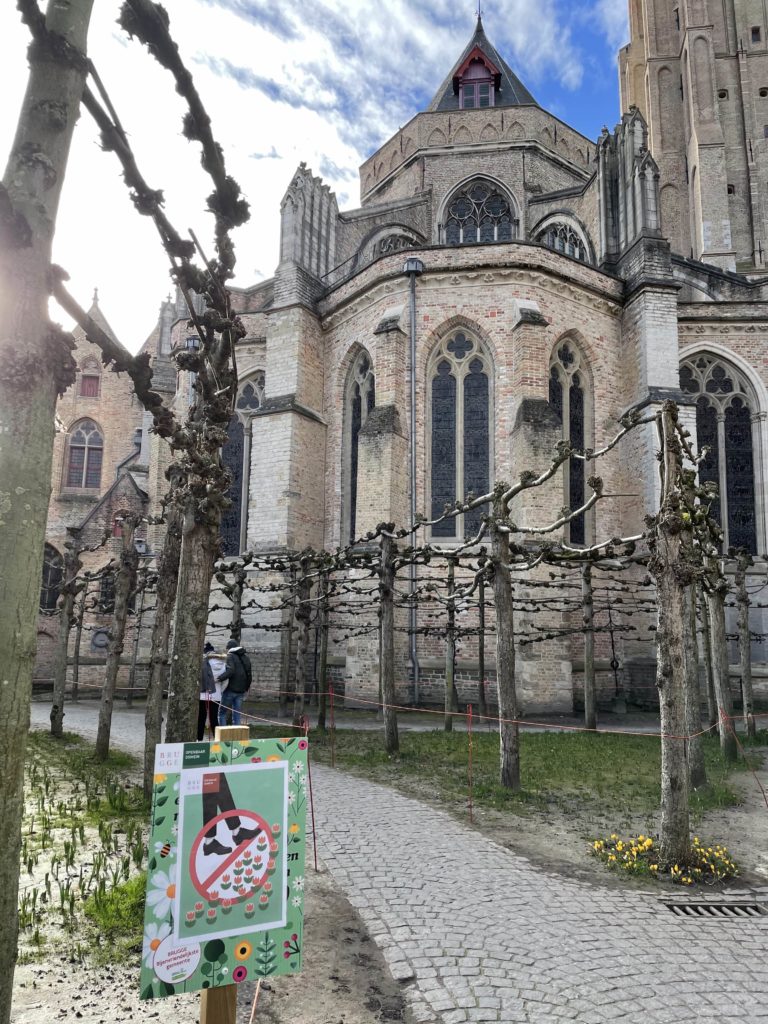
Special about this house is that the Gruut family got a special permit to construct next to one of the biggest churches in Bruges, the church of Our Lady (or Onze Lieve Vrouw Kerk in Dutch). And not only did they build their house next to the church, but they built a chapel directly to the church so they could attend church from home. This balcony chapel can be seen both from the house and the church currently, it is all wood and has been restored recently so even the paints are visible.
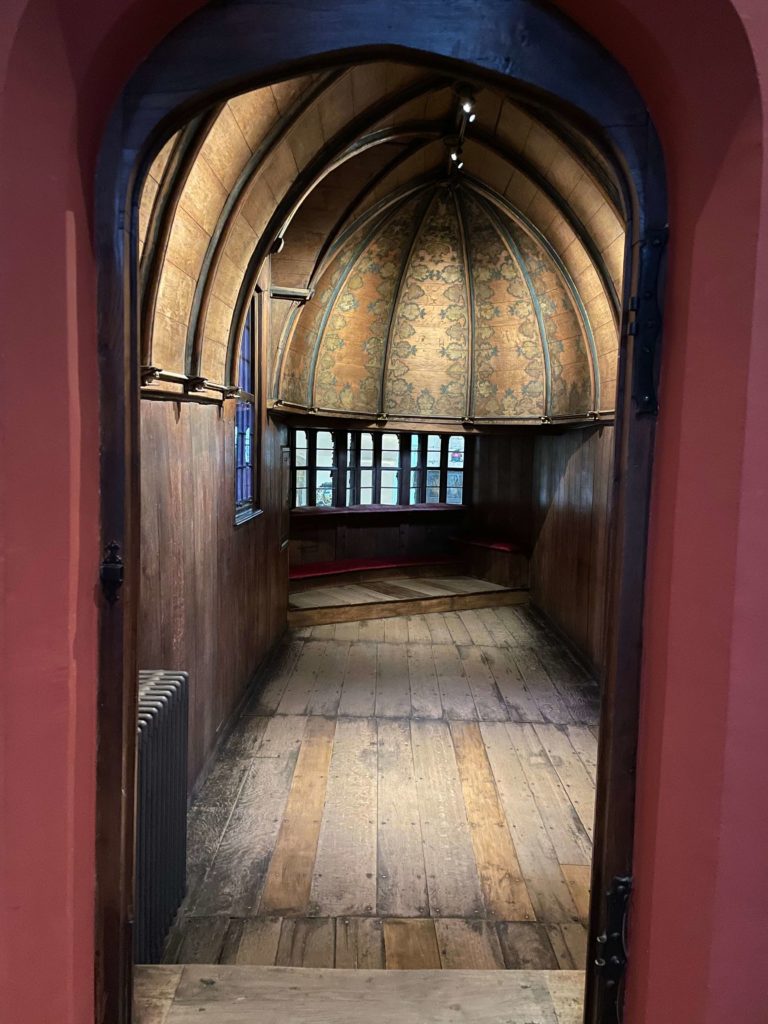
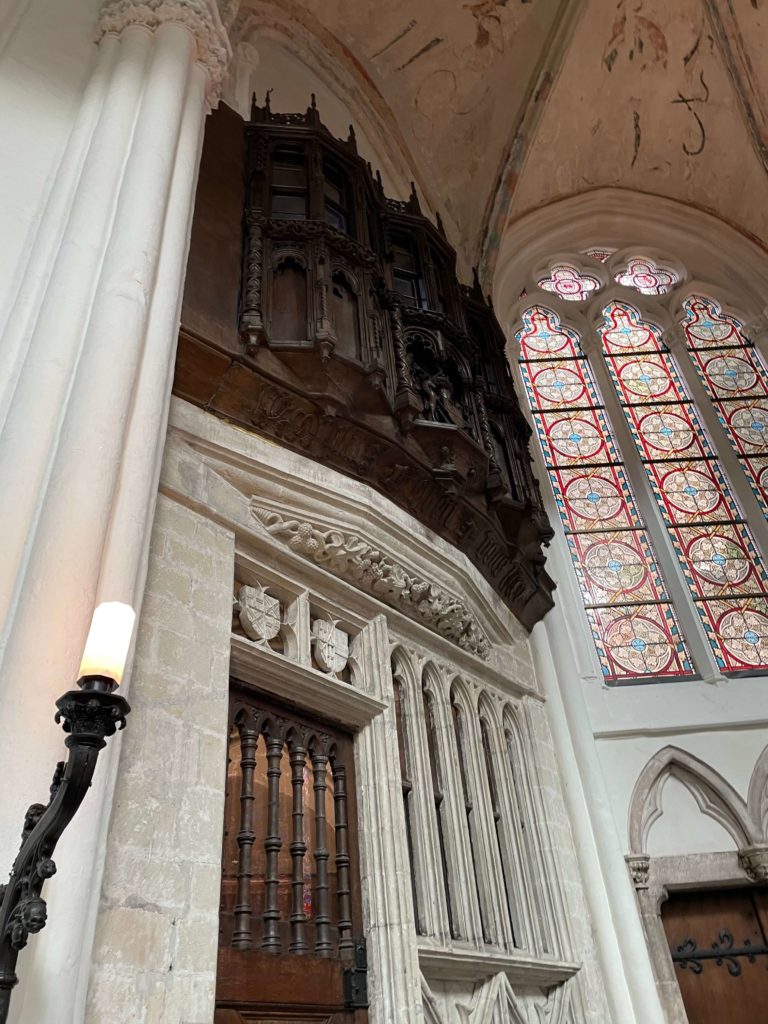
Onze Lieve Vrouw Kerk
The Gruut family chapel is not the only thing special about the O.L.V. church. This gothic church is one of the main attractions of the city. It counts as a museum beside still working as a catholic church.
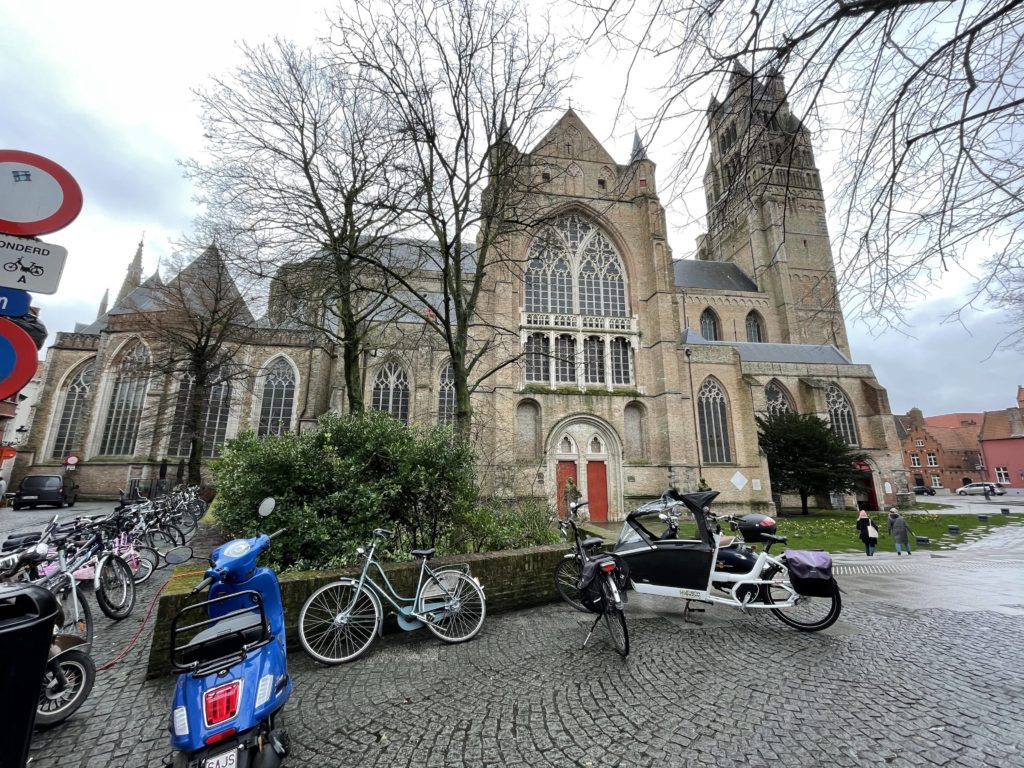
Inside the church, one can find multiple decorations and burials, as can be expected in most any church built in the Middle Ages. But some of the burials within the Church of our Lady are more interesting. On one side, traditional middle ages, from the early stages of use of the church, can be found, excavated and presented to the public with explanations about their whereabouts. These burials were excavated and decorated directly for deceased people, not created in advance, which shows the great knowledge of the techniques of painters.
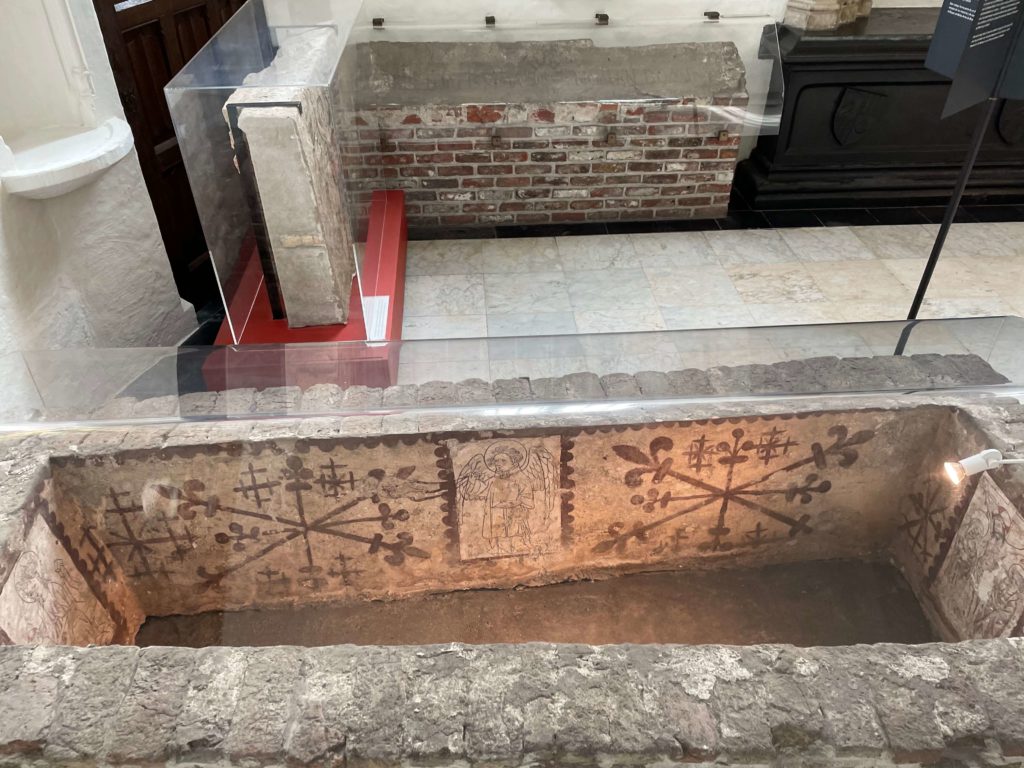
In the centre of, the choir, and two big burials, the ones from two royal members of the house of Burgundy, Charles the Bold and his daughter Mary of Burgundy, grandmother of Charles the V.
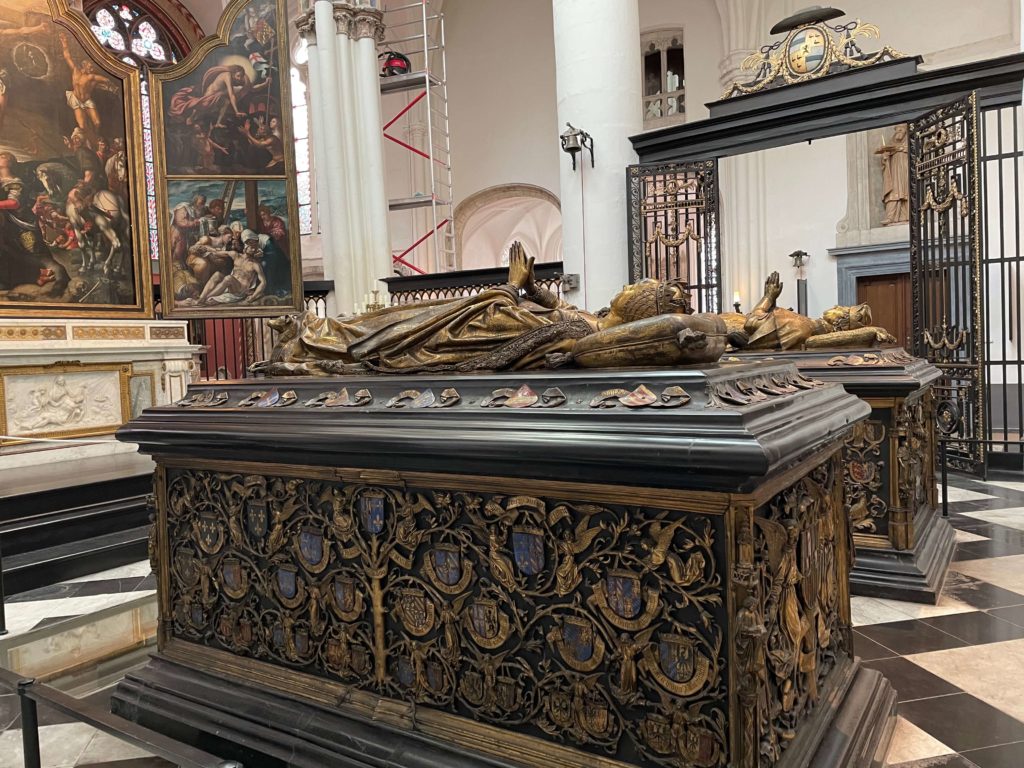
And, one of the main attractions, is also related to the importance of the commerce of Bruges, as most everything in the city. The Madonna by Michelangelo, his only sculpture that left Italy while he was alive. Even though this piece was supposed to be shown in the Sienna cathedral, some problems led the artist to sell the piece to two merchant brothers from Bruges who ended up using it as a decorative piece on the altar to their family.
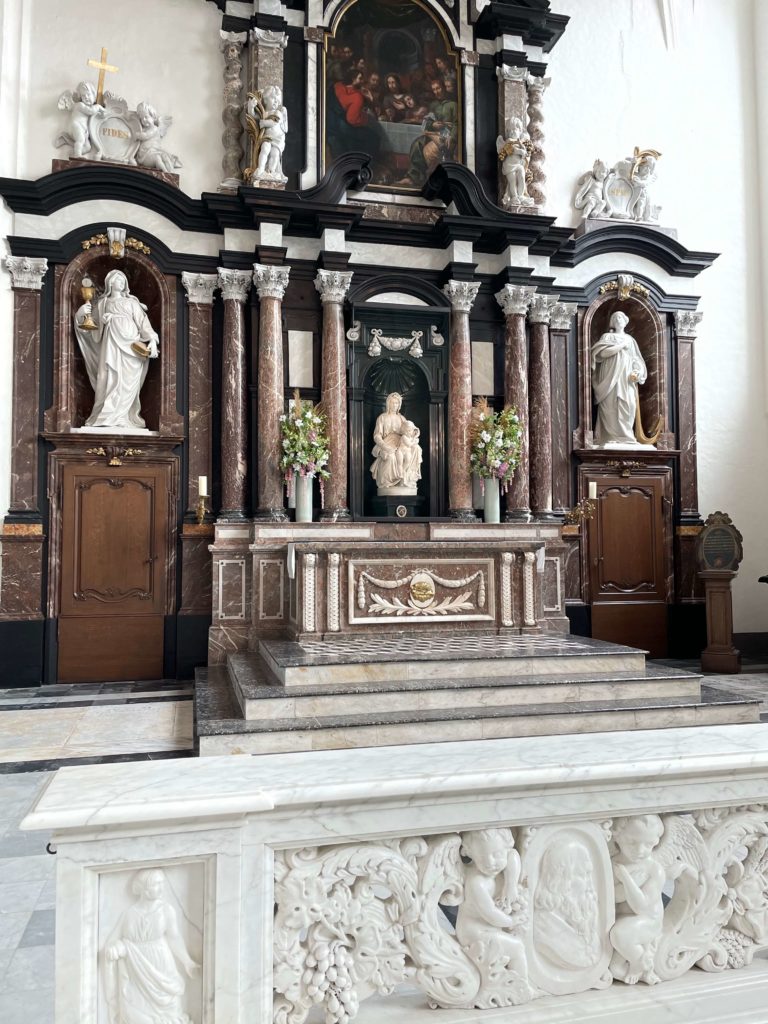
The Church of Our Lady, alongside the older cathedral of Saint-Salvator (Sint-Salvatorskathedraal in Dutch) and the belfry, marked the most recognisable skyline of the city of Bruges.
Other Buildings
The commerce brought as well, merchants from other countries in Europe, who got together and created their own quarters within the city. With constructions answering also to the fashion of their home countries, they were an active part in modifying the image of the city. Among these groups were important the English, Scottish, French or Portuguese merchants. The last, for example, introduced the market of spices in the area.
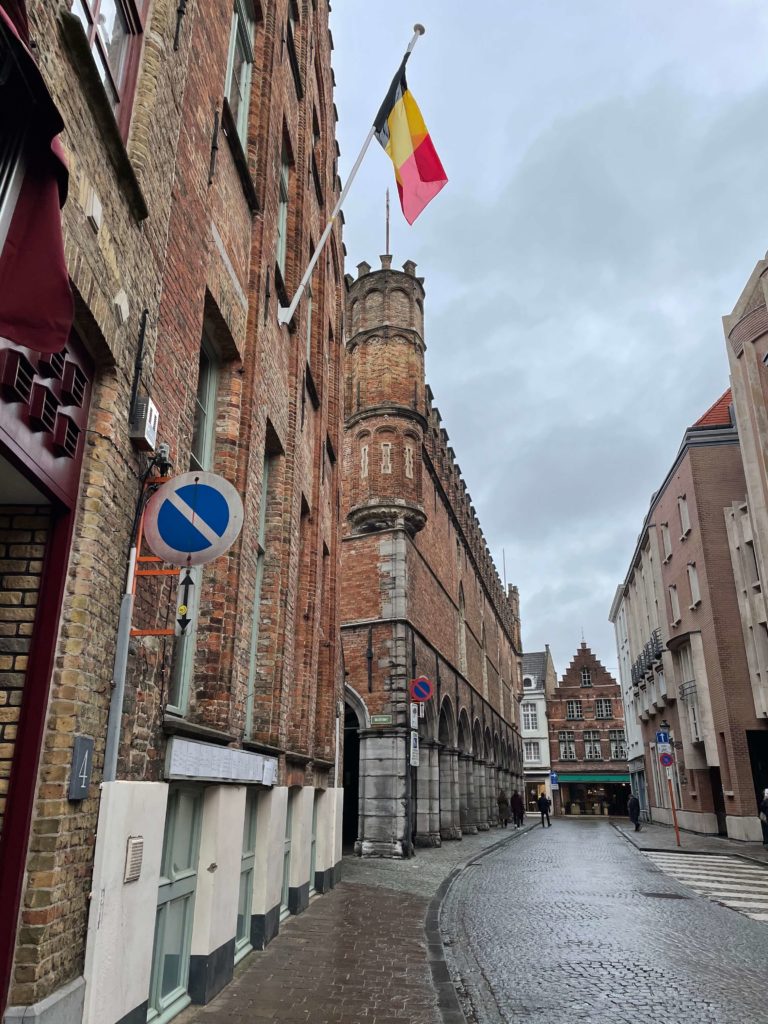
Falling
As always, glory and fortune can’t last forever and in the 16th century, the sea harbour was closed by land movements, which robbed Bruges of its predominant role in world trade.
With the disappearance of commerce, the city lost its power and richness and turn into a small part of the Habsburg territories.
Reinvention
In the 19th century with a just independent Belgium, Bruges came back from its ashes.
A group of thinkers, artists and politicians, influenced by the classicism of the time, wanted to see the city as it was in its maximum grandness. With some fight from other influential citizens who thought the city should look forward and renew to accommodate a more modern lifestyle, the classicists won and started the heruitvinding (reinvention in Dutch) of Bruges.
This reinvention was led by the architect Louis Delacenserie, who, alongside other artists and architects, create the plan to make Bruges a medieval city once again and one of the first touristic attractions. They created plans to reverse the modernisations that had already been made. They changed facades and made specific plans for all the medieval houses within the city centre so they could be renewed and restored without losing the medieval charm, or what they considered medieval. Nowadays we know some of these renovations were not as close to a medieval reality as they wanted to be, but it still creates the character of the city.
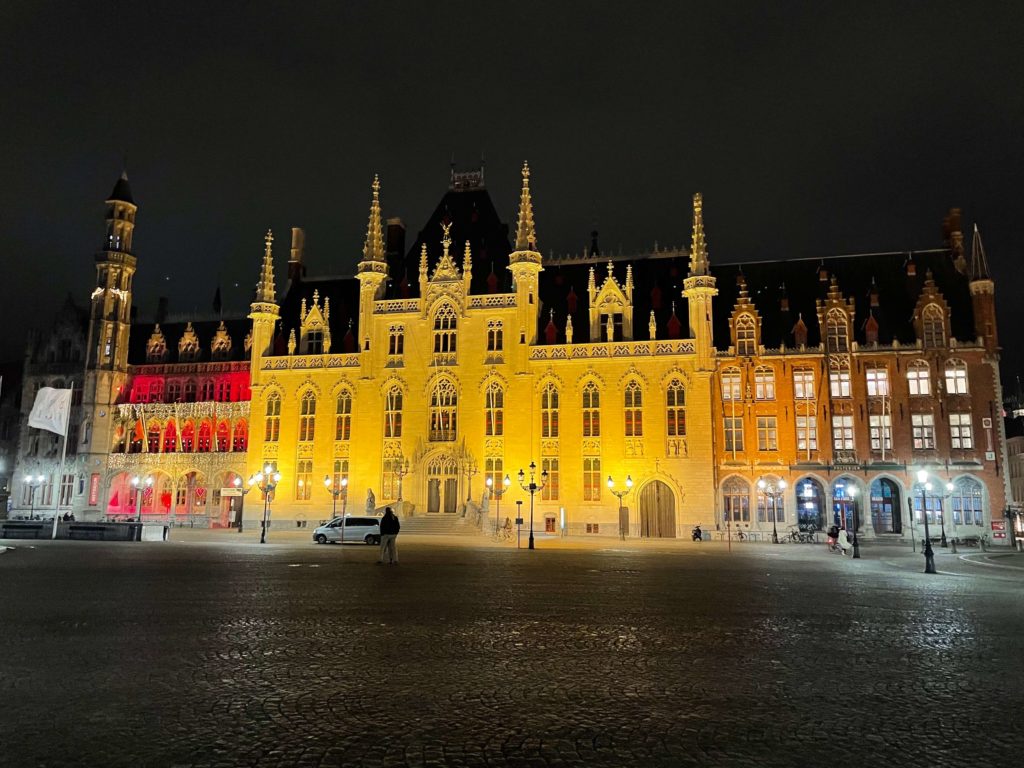
Once the reinvention plan was completed the city was flooded with tourists. Mostly English and French people who wanted to experience how life in a medieval town felt.
Living Heritage
Bruges, as any other European city, has kept growing and adapting to the necessities of its inhabitants, but maintaining the feeling of a Middle Age city and focused on the tourism and dissemination of their heritage.
On a walk in Bruges, you can come across one of the 13 museums within the city. Some of them, inside the city centre, others a bit outside, nothing a short walk can’t solve.
But not only the museums keep Bruges’ heritage alive. In the Grote Markt square, in front of the Belfry (among other locations), a heritage dissemination project open to anyone who wanted to spend some minutes watching a video about the location in the middle ages.
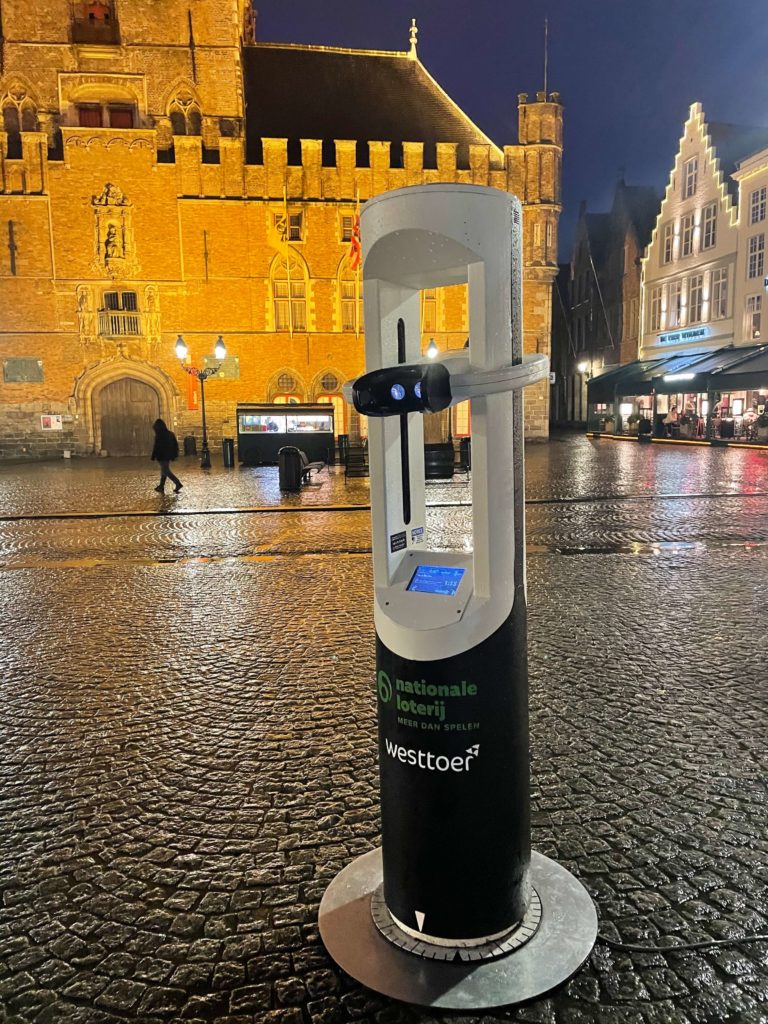
As well, archaeological excavations within the city limits allow any passer-by to take a peak at the archaeological work.
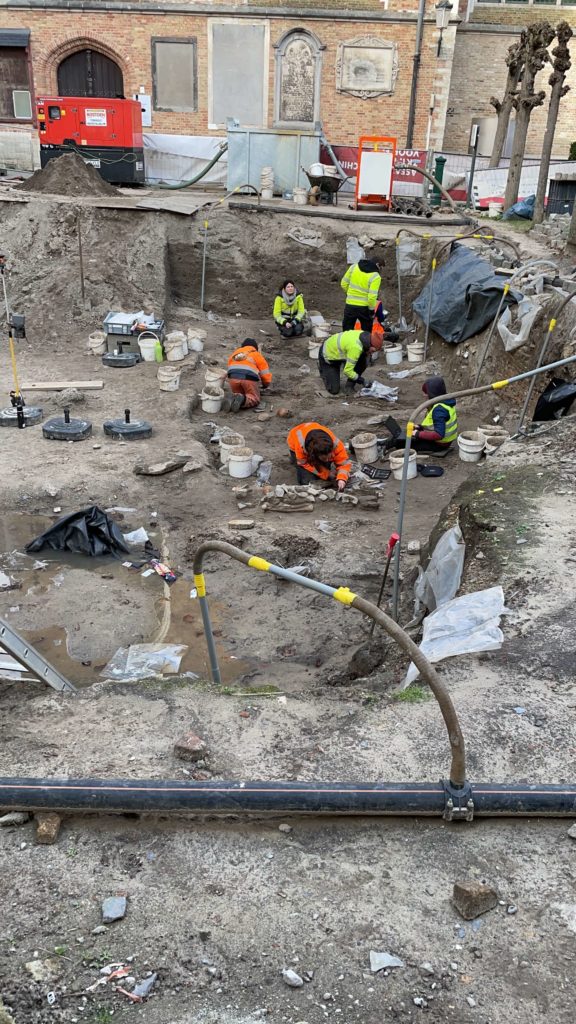
Archaeological excavation next to Our Lady in February / Photo: Aida Loy 2022
And UNESCO?
And what about the UNESCO listings mentioned at the beginning of this article?
Bruges counts with three listings on the world heritage list.
In 1998 the first inclusion, the beguinage (Prinselijk Begijnhof Ten Wijngaarde its complete name in Dutch), was included in the group of “Flemish Béguinages”. The beguinage consists of a space completely enclosed but separated from the city with houses and a church. These spaces started in the 12th century as a safe space for women to live in their own but without entering a convent. Nowadays, and since the beginning of the 20th century, it houses a group of Benedictine nuns.
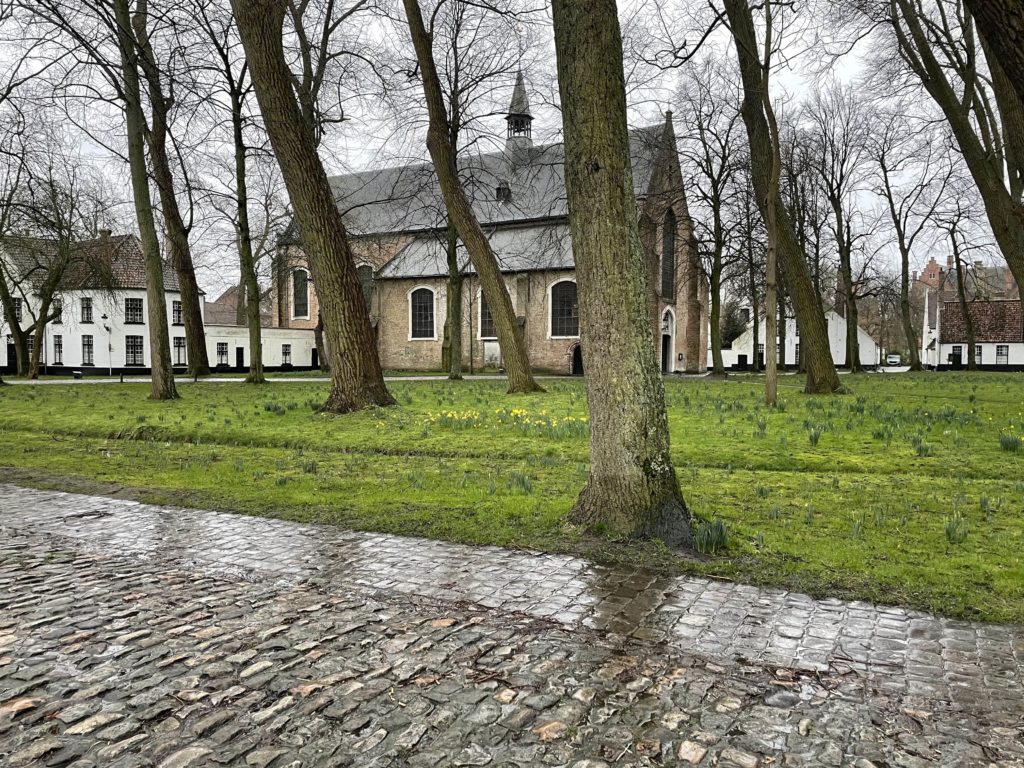
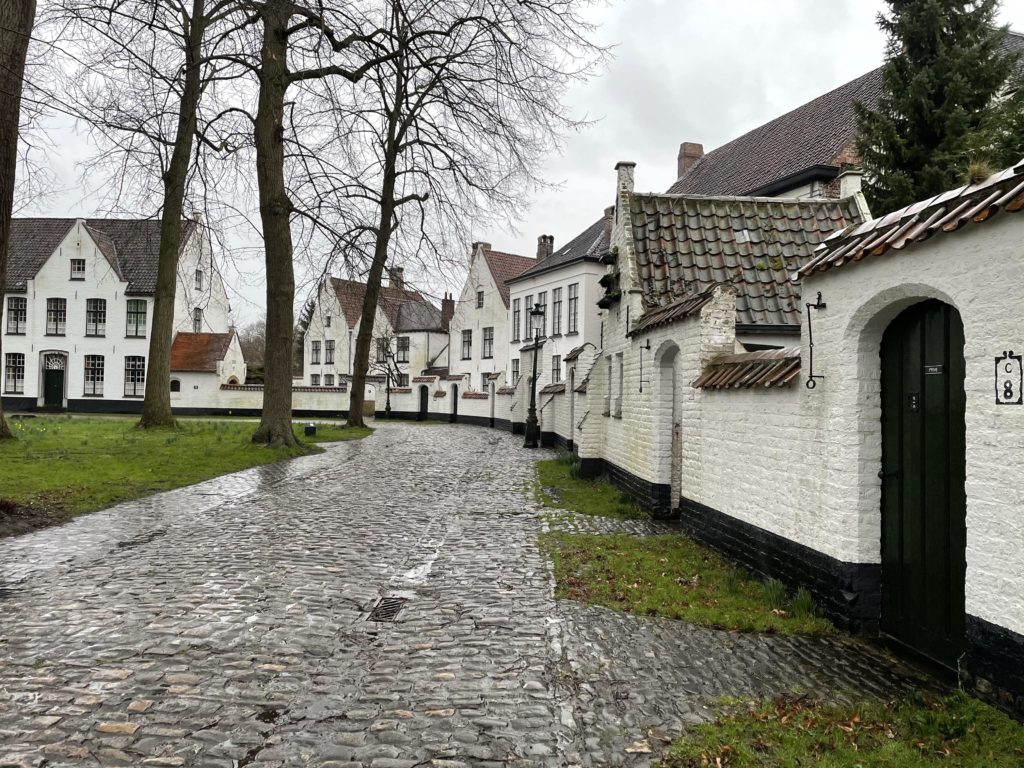
In 1999, another group inclusion, “Belfries of France and Belgium”. This enlisted the belfry, or bell tower, of the city of Bruges, located in its main square Grote Markt. The importance of the belfries lies in its representation of the city council’s power. The one in Bruges was built in the 13th century and it is still functioning and visitable.
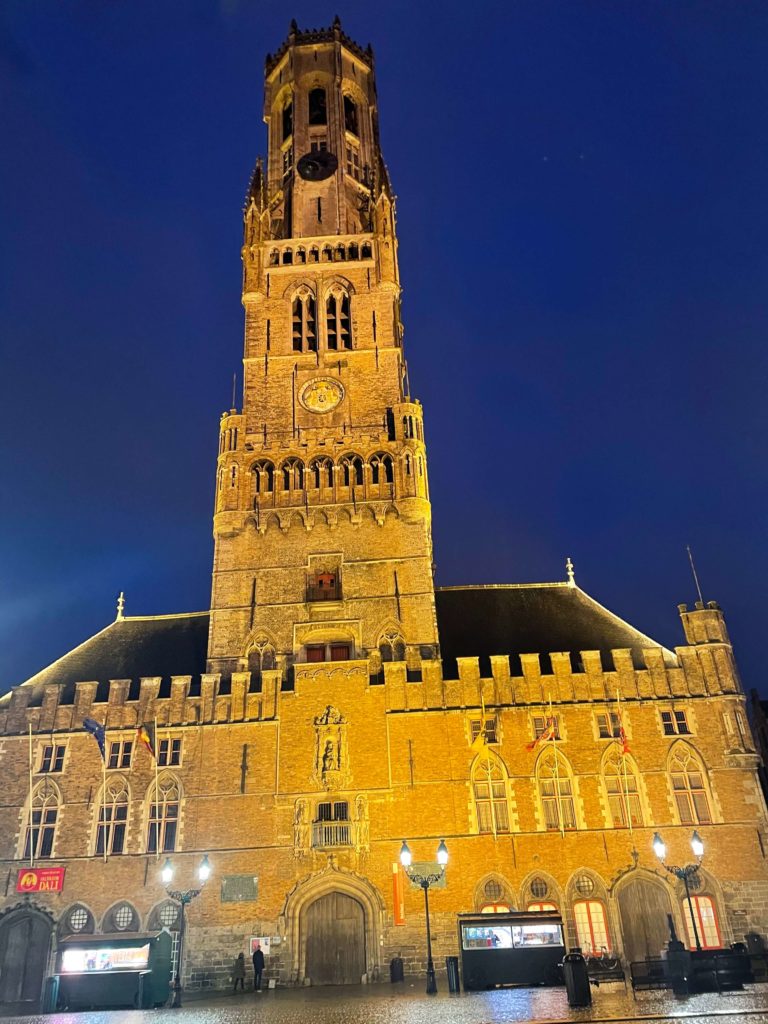
Lastly in 2000, the whole historic city centre of Bruges was enlisted in the UNESCO world heritage list as an outstanding example of medieval architecture and its preservation.
Now, next time you hear about Bruges you can think not only about its touristic side but also how the city proudly keeps and shares its heritage. How this journey of heritage guardians started long ago when almost anyone was thinking about heritage and its importance.
XXXXXXXXXXXXXXXXX
